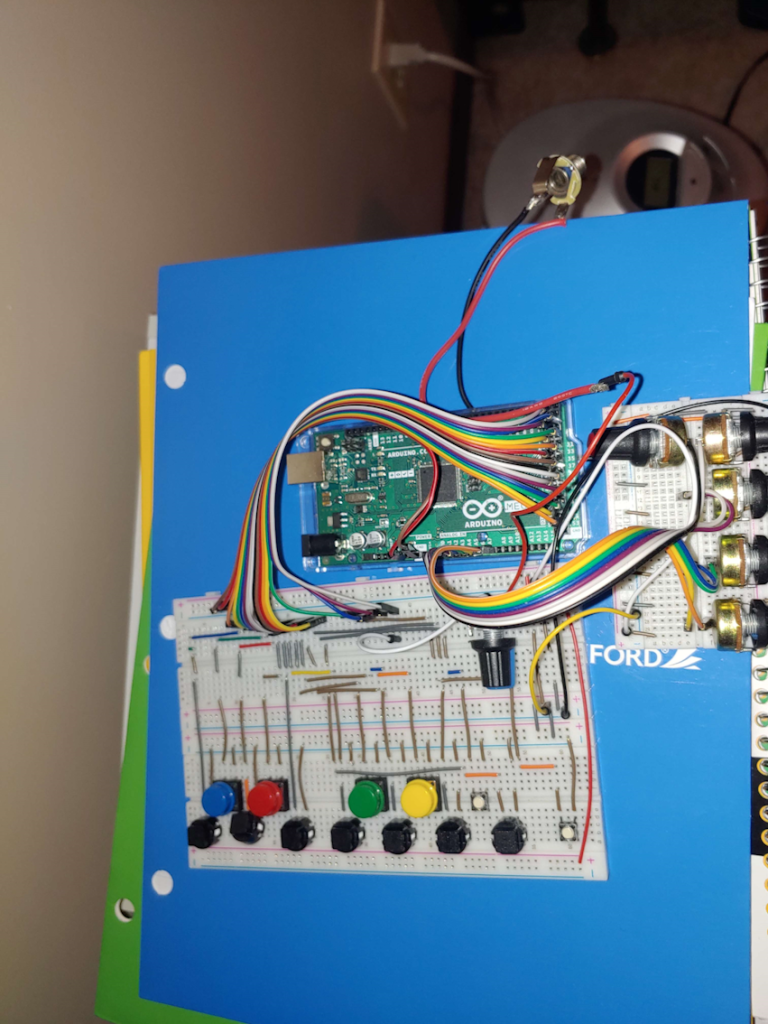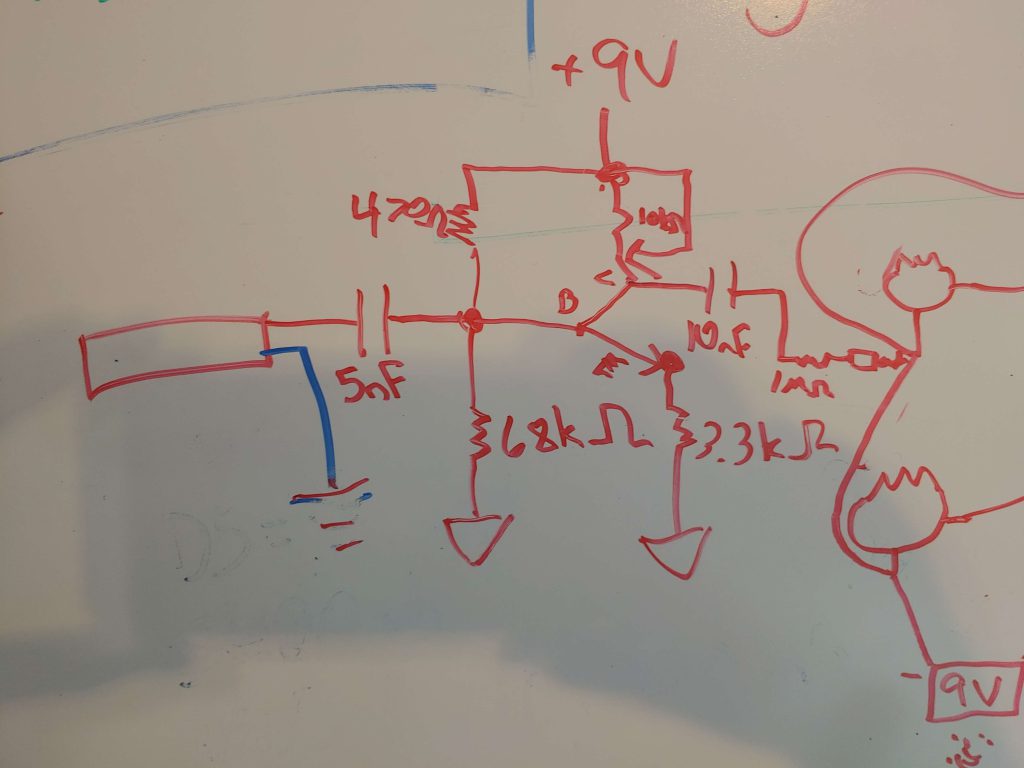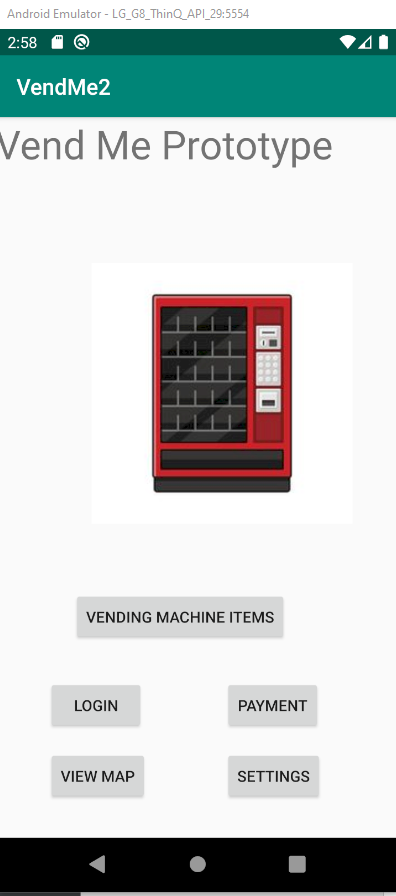
[HOME] -> [ENGINEERING PROJECTS] -> [ARDUINO + MISC]
Arduino + Misc.
Background
I have been working with microcontrollers, single-board computers, mobile phones, PLCs, and Arduino boards since early in my college career.
Sadly, I do not have a full and comprehensive portfolio of all the work I’ve done in this area. Some of it is lost with time, and much of it is hand written within notebooks in my closet. Luckily, however, I retained images and videos from a few of my favorite projects I completed.
Arduino monophonic synth

The Arduino monophonic synthesizer is my favorite project I’ve worked on in my spare time. It uses an Arduino Mega, momentary push buttons, and potentiometers to create a fully functional musical instrument. It is the combination of my passion for music and my passion for engineering. While not overly complex, it still provides pitch shifting, volume control, speaker output, and more!
Code (main)
#include "pitches.h"
//buttons (keys)
int c1 = 53;
int cS = 50;
int d = 49;
int dS = 46;
int e = 45;
int f = 42;
int fS = 41;
int g = 38;
int gS = 37;
int a = 34;
int aS = 33;
int b = 30;
int c2 = 29;
int duration = 25;
//pot (pitch change)
int pot1 = A0;
int pot2 = A1;
int pot3 = A5 ;
int pot4 = A7;
int pot5 = A3;
int pot_val=0;
//Other
int speaker = 22;
void setup() {
pinMode(c1, INPUT_PULLUP);
pinMode(cS, INPUT_PULLUP);
pinMode(d, INPUT_PULLUP);
pinMode(dS, INPUT_PULLUP);
pinMode(e, INPUT_PULLUP);
pinMode(f, INPUT_PULLUP);
pinMode(fS, INPUT_PULLUP);
pinMode(g, INPUT_PULLUP);
pinMode(gS, INPUT_PULLUP);
pinMode(a, INPUT_PULLUP);
pinMode(aS, INPUT_PULLUP);
pinMode(b, INPUT_PULLUP);
pinMode(c2, INPUT_PULLUP);
Serial.begin(9600);
}
void loop() {
pot_val = analogRead(pot1);
pot_val = pot_val/25;
Serial.println(pot_val);
while(digitalRead(c1) == LOW) {
int c1note = NOTE_C3 + pot_val;
tone(speaker, c1note);
}
while (digitalRead(cS) == LOW) {
int cSnote = NOTE_CS3 + pot_val;
tone(speaker, cSnote );
}
while (digitalRead(d) == LOW) {
int dnote = NOTE_D3 + pot_val;
tone(speaker, dnote );
}
while (digitalRead(dS) == LOW) {
int dSnote = NOTE_DS3 + pot_val;
tone(speaker, dSnote );
}
while (digitalRead(e) == LOW) {
int enote = NOTE_E3 + pot_val;
tone(speaker, enote );
}
while (digitalRead(f) == LOW) {
int fnote = NOTE_F3 + pot_val;
tone(speaker, fnote );
}
while (digitalRead(fS) == LOW) { // need to finish up
int fSnote = NOTE_FS3 + pot_val;
tone(speaker, fSnote );
}
while (digitalRead(g) == LOW) {
int gnote = NOTE_G3 + pot_val;
tone(speaker, gnote );
}
while (digitalRead(gS) == LOW) {
int gSnote = NOTE_GS3 + pot_val;
tone(speaker, gSnote );
}
while (digitalRead(a) == LOW) {
int anote = NOTE_A3 + pot_val;
tone(speaker, anote );
}
while (digitalRead(aS) == LOW) {
int aSnote = NOTE_AS3 + pot_val;
tone(speaker, aSnote );
}
while (digitalRead(b) == LOW) {
int bnote = NOTE_B3 + pot_val;
tone(speaker, bnote );
}
while (digitalRead(c2) == LOW) {
int c2note = NOTE_C4 + pot_val;
tone(speaker, c2note );
}
noTone(speaker);
}Code (pitches.h)
#define NOTE_B0 31
#define NOTE_C1 33
#define NOTE_CS1 35
#define NOTE_D1 37
#define NOTE_DS1 39
#define NOTE_E1 41
#define NOTE_F1 44
#define NOTE_FS1 46
#define NOTE_G1 49
#define NOTE_GS1 52
#define NOTE_A1 55
#define NOTE_AS1 58
#define NOTE_B1 62
#define NOTE_C2 65
#define NOTE_CS2 69
#define NOTE_D2 73
#define NOTE_DS2 78
#define NOTE_E2 82
#define NOTE_F2 87
#define NOTE_FS2 93
#define NOTE_G2 98
#define NOTE_GS2 104
#define NOTE_A2 110
#define NOTE_AS2 117
#define NOTE_B2 123
#define NOTE_C3 131
#define NOTE_CS3 139
#define NOTE_D3 147
#define NOTE_DS3 156
#define NOTE_E3 165
#define NOTE_F3 175
#define NOTE_FS3 185
#define NOTE_G3 196
#define NOTE_GS3 208
#define NOTE_A3 220
#define NOTE_AS3 233
#define NOTE_B3 247
#define NOTE_C4 262
#define NOTE_CS4 277
#define NOTE_D4 294
#define NOTE_DS4 311
#define NOTE_E4 330
#define NOTE_F4 349
#define NOTE_FS4 370
#define NOTE_G4 392
#define NOTE_GS4 415
#define NOTE_A4 440
#define NOTE_AS4 466
#define NOTE_B4 494
#define NOTE_C5 523
#define NOTE_CS5 554
#define NOTE_D5 587
#define NOTE_DS5 622
#define NOTE_E5 659
#define NOTE_F5 698
#define NOTE_FS5 740
#define NOTE_G5 784
#define NOTE_GS5 831
#define NOTE_A5 880
#define NOTE_AS5 932
#define NOTE_B5 988
#define NOTE_C6 1047
#define NOTE_CS6 1109
#define NOTE_D6 1175
#define NOTE_DS6 1245
#define NOTE_E6 1319
#define NOTE_F6 1397
#define NOTE_FS6 1480
#define NOTE_G6 1568
#define NOTE_GS6 1661
#define NOTE_A6 1760
#define NOTE_AS6 1865
#define NOTE_B6 1976
#define NOTE_C7 2093
#define NOTE_CS7 2217
#define NOTE_D7 2349
#define NOTE_DS7 2489
#define NOTE_E7 2637
#define NOTE_F7 2794
#define NOTE_FS7 2960
#define NOTE_G7 3136
#define NOTE_GS7 3322
#define NOTE_A7 3520
#define NOTE_AS7 3729
#define NOTE_B7 3951
#define NOTE_C8 4186
#define NOTE_CS8 4435
#define NOTE_D8 4699
#define NOTE_DS8 4978Room for improvement
If I were to make a second iteration of this project, there are several things that could be improved and expanded upon.
First, I would focus on polyphony using multiple CPU threads. The processor on the Arduino Mega is powerful enough to support multi-tasking, which could be used to send multiple notes to a speaker at once.
In addition, I would modularize my code. While this code functions well and feels good while playing the synth, it is a pain to edit and improve. By creating and implementing one or two functions, I could reduce the size and receptiveness of my code drastically.
Lastly, I would program an expansion board. When I was finishing this project up, I attached a board of about eight potentiometers to do different tests with. Combining the analog input of the potentiometers with hardware interrupts, I could achieve more fluid pitch shifting. I could also add other modulation effects, such as tremolo, vibrato, delay, and distortion.
Fuzz circuit
About
I’ve been obsessed with guitar pedals for a long time so one day I decided to look into how to make one. Finding out that a fuzz circuit is the easiest to make, I set to work in my garage. Above is a video of me playing the circuit in my garage, and below is the schematic I used to create the effect.

VendMe

About
VendMe was a group project I completed at Stark State. This project was a semester long group project that I became the leader for. I was elected the CEO, came up with the project idea, programmed the prototype using the Android development environment, and created the database for.
The application itself was designed to allow consumers to find and purchase items from nearby vending machines without having to wait in line or have to fumble with physical payment methods like cash or debit card. Using VendMe, a user would locate nearby vending machines on a map, check its inventory, and be able to make a decision from the comfort of their phone.
VendMe would reduce the amount of time a user needs to spend at a vending machine. This would then lead to reduced queue times in places like theme parks, where vending machine lines can often take 10 or more minutes.
Download the full project [HERE]
or
Download the project write up [HERE]
QUICK LINKS:
